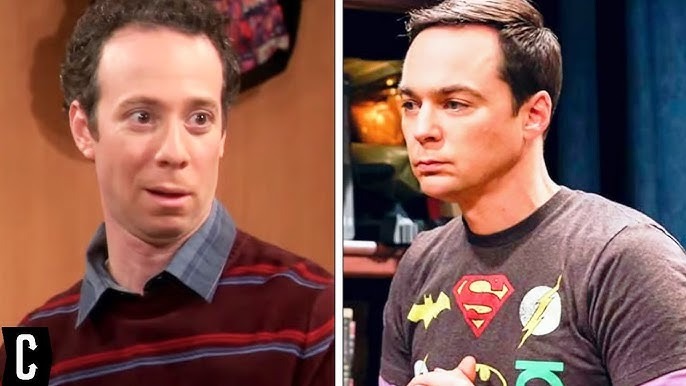
Chuck Lorre’s plans to incorporate CGI in Stuart Fails to Save the Universe raise concerns over how the approach will align with the TBBT franchise.
Chuck Lorre is fully on board with a new Big Bang Theory spinoff, one that he has revealed will incorporate heavy CGI, a new and unique take, departing from the usual trend of any of the previous shows in the TV franchise. Lorre’s new series focuses on Kevin Sussman’s Stuart from the original sitcom while bringing back several original characters, including Denise, Bert, and Kripke.
In a switch from its predecessors, the new series will use a “lot of special technical stuff“, as explained by the creator and showrunner himself at the Banff World Media Festival. “There’s a lot of CGI,” Lorre stated, as per Variety. He continued,
There’s a lot of special technical stuff that — you know, for me in my career, a big production number was two people sitting on a couch, drinking coffee! This is different. This is trying to incorporate some of that world of science fiction/fantasy into a comedy.
Lorre further admitted that the project is out of his comfort zone, as he has no prior experience working with CGI. But he still hopes to learn and grow while working on the new spinoff.
What Chuck Lorre’s CGI Comment Means for ‘Stuart Fails to Save the Universe’.
Chuck Lorre’s latest project, Stuart Fails to Save the Universe, marks a bold departure from his sitcom comfort zone, especially with his recent comments about the show’s heavy reliance on CGI. And it displays both the ambition and potential pitfalls of this new direction.
A most significant ‘red flag’ is in Lorre’s statement itself, when he admits, “I’m completely out of my element,” and “Maybe I can learn as we go.”
Lorre has created some of the best and highly acclaimed TV sitcoms throughout his career. But a lack of experience and the idea of learning a whole new concept on the fly with a genre-blending show doesn’t seem like the best choice. And it could put the project at risk.
Following is the list of Chuck Lorre’s most notable shows, several of which earned critical acclaim and industry awards throughout their run, and none of them were heavily reliant on CGI.
So, there is a high chance that the bold move by the creator could also cause the project to struggle when it comes to meeting the expectations of the audience. That said, the approach could also lead to the creation of something far more stylistic, bold, and, if done right, genuinely refreshing.

You see, the concept, as explained by Lorre, of the blending of comedy with fantasy or fiction, feels oddly reminiscent of Edgar Wright’s cult classic Scott Pilgrim vs. The World. The 2010 film effortlessly fused video game logic, comic-book aesthetics, and real-world slacker comedy.
Much like Scott, Stuart Bloom, the loveable, awkward underdog from the TBBT universe, has always carried that quiet, offbeat energy. And the idea of tossing him into a fantastical, visually heightened world where he’s responsible for saving the universe appears quite intriguing.
If Lorre is planning to lean into the same arena, with a blend of mundane, character-driven humor with surreal and over-the-top visuals, Stuart Fails to Save the Universe could hit an exciting sweet spot.
And in this manner, the CGI wouldn’t just be about flashy effects. Rather, it could serve as a tool to amplify the absurdity and charm of an everyday closed stumble through epic and ridiculous stakes.
Scott Pilgrim worked because it embraced its weirdness without losing its heart. If Lorre can strike that balance, keeping Stuart’s awkward sincerity intact while letting the fantastical elements run wild, this could be more than just a genre experiment. It might be the most intriguing sitcom evolution we’ve seen in years.
Our Thoughts on How Lorre’s Future Sitcoms Can Sustain a CGI Push
Chuck Lorre diving into CGI-heavy territory with Stuart Fails to Save the Universe definitely feels like new ground, but it also raises an interesting question: can his future sitcoms really sustain that level of visual ambition? We think the answer is yes… if done with care.
CGI works best when it serves the story, not the other way around. So, the best way to incorporate it into the narrative would be to use it to amplify the jokes, while keeping the spotlight firmly on the characters, the true heart and soul of any good sitcom.
Striking the right balance with CGI is key. While a little otherworldly flair can add freshness, excessive use could turn the sitcom into an inflated spectacle. A light, well-timed CGI touch can keep things feeling grounded and fun.
So, if Lorre successfully figures out how to make CGI work within the sitcom format, Stuart Fails to Save the Universe could be more than just a genre experiment. It might signal a surprisingly futuristic glow-up for the sitcom world.
